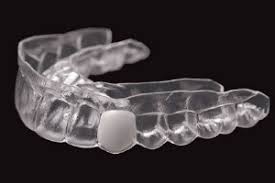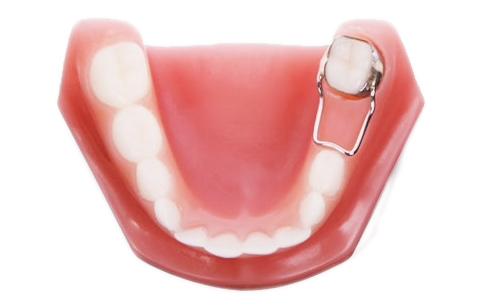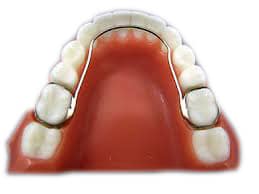Losing your baby teeth is a big part of growing up. But when it happens prematurely, early orthodontic intervention through the use of space maintainers might be required. We’ll help you understand what they are, and when space maintainers before braces might be required.
Most children will have a full set of 20 baby teeth (also known as milk teeth or deciduous teeth) around the age of 3.
However, in some cases accidents or decay can cause premature tooth loss. When this happens, and the new adult tooth isn’t ready to erupt, a space maintainer may be required.
What are space maintainers?
When the baby tooth is gone, the surrounding teeth may shift their position or grow in a way that reduces the amount of room available for the adult tooth to come in. This in turn causes crowding in the mouth which may require more extensive orthodontic treatment to correct.
A space maintainer does exactly what it sounds like – it maintains the amount of space available in the mouth and prevents unwanted drift of surrounding teeth so the permanent teeth have a chance to erupt correctly. They are passive devices – preventing tooth movement rather than applying pressure to teeth. Space maintainers can be removable or fixed, and some may include the use of artificial teeth to aid chewing or to improve the appearance of the child’s smile.
What types of space maintainers are there?

Space maintainers can take several forms depending on the age of the patient, the tooth location and your budget. Removable space maintainers, such as a Hawley or Essix retainer (seen left), can include an artificial tooth to maintain the position of the teeth, and are best suited for older children who can be responsible for cleaning the appliance regularly.
Types of fixed space maintainers
There are three main types of fixed space maintainers:
Unilateral (or single tooth) space maintainers (Band and loop)
These involves the use of a stainless steel band which wraps around the outside of an adjacent tooth, with a metal loop to keep the space intact.

Lingual space maintainers
Involves the use of stainless steel bands attached to the first permanent molars, and a round wire which runs along the tongue/lingual side of the teeth.

Distal shoe appliance
This is used when there is an un-erupted permanent molar tooth at the back of the mouth. It is a more complex type of space maintainer as the end of the metal device extends into the gums (rather than sitting on top) to guide the eruption pathway of the adult molar.
What’s the difference between spacers and space maintainers?
Space maintainers, which may be worn for several years prior to adult teeth erupting and the second phase of orthodontic treatment beginning, should not be confused with spacers. Spacers, more commonly referred to as separators, are a small device made out of rubber bands or metal loops, that are placed between 2 teeth by the orthodontist. The purpose of spacers is to create enough space between the teeth to allow the bands of your braces to fit comfortably around the particular teeth.
Are space maintainers really necessary?
Whether your child really needs a space maintainer will depend on their dentition and expected growth pattern. A space maintainer will help to ensure that there is enough room in the mouth for an adult tooth to erupt when it is ready, which can help to avoid overcrowding. If you avoid getting a space maintainer, they may experience crowding and crooked teeth requiring more complex treatment to correct.
However, a single space maintainer is no guarantee that your child won’t require more orthodontic treatment as they grow. It is best to consult a specialist orthodontist so they can assess your child’s teeth and provide you with an informed recommendation.
Do space maintainers hurt?
Your child may experience some discomfort when their space maintainer is first applied, particularly if they are having a fixed appliance. However as they adjust to the new sensation in their mouth any pain should go away and they’ll quickly forget they are wearing it. Mild pain can be treated with over the counter medications.
How long do space maintainers stay in?
This depends on your child’s age when their tooth is lost and how long it takes for their adult tooth to erupt naturally. It can be a few months to several years. If there is no adult tooth expected and the space maintainer is applied to maintain the smile until a more permanent solution can be applied, then they may need to wear it for several years. It is different for everyone.
How to care for space maintainers?
all forms of space maintainers will require careful care and cleaning to ensure their longevity and to safeguard the health of your child’s teeth and gums. This includes regular brushing and flossing, and daily cleaning of removable appliances. Do not place a plastic removable space maintainer in hot water or in the dishwasher as this can warp the plastic. Consult your orthodontist for detailed directions on care and cleaning.
Will my child need space maintainers before braces?
If your child has prematurely lost a tooth or has significant crowding of the upper or lower teeth, you might want to make an appointment with an orthodontist to figure out whether a space maintainer will be required. In this appointment, your orthodontist will take an x-ray of the teeth to assess their growth patterns and will devise a plan for your child’s early orthodontic treatment.
If you don’t currently have a regular orthodontist, you can see one without a referral from your dentist. Simply use our finder tool to see all the orthodontists in your area.










